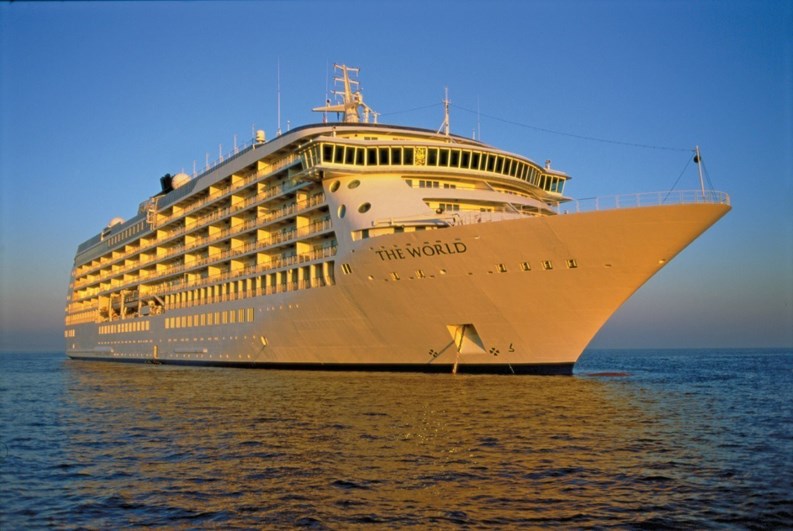It’s not your Daddy’s condominium any more.
Since the 1960s and ‘70s, when condominium home ownership became not only available but a viable alternative to single-family housing in New England, the market has evolved with many alternatives to the first apartment-like complexes.
Campgrounds went condo; luxury hotels added condos and penthouses to their upper floors; a few cruise ships created floating condos for those who wished to spend their lives on the highseas and visit ports in nearly every country in the world.
Picking up on the trend, Florida added “dockominiums,” or wet moorings; and “rackominiums,” dry docks, for yachts to the mix. In the western United States, one could purchase a garage condo for extra storage or a recreational vehicle off-season.
“Camp-ominiums”
As by far the most affordable residences, camp-ominiums have proliferated across New England.
Sun Valley Resort Beach Club and Camping Cooperative in Stafford Springs, Connecticut, has a backstory common to many camp-ominiums. The camp, which started as a beach club with a swimming pond and picnic areas in 1962, began to clear campsites in the 1970s, because beach club members expressed interest in staying more than just a day. It became a cooperative association in 1988. Pre-viously, sites were rented by the season.
Sun Valley is seasonal, with two sandy beaches, a swimming pond and fishing pond, a garden house available for party rentals, a basketball court, pavilion and covered beach picnic tables, a restaurantand banquet hall. Canoe and paddleboats may be rented. The wooded grounds back up to state property.
Water to the camp is turned on April 15 and turned off October 15, and all residences must be winterized. The restaurant and banquet facilities, however, are available year round, and members may skate on the pond or cross-country ski on the grounds.
The sites themselves sell for between $18,000 and $35,000. But land with acamper already on site may be leased for about $3,000 a year, including winter storage.
Not surprisingly, membership has gone through phases. The first campers were often young families with children. When children left home, parents used the camp as a second home, and most people came from relatively short distances. “Snowbirds” have always been part of the mix. They use the camp from May to September, andretreat south for the winter. People from other states who still have ties in Connecticut have access to their own private and affordable housing.
But some of the grown children of the first campers are coming back with their own kids, according to Tracie Zelonka, a manager. Additionally, seasonal contractors from out of state working in the area live in Sun Valley during the week, and return home on weekends. Cox Cable, for example, rented eight campers a few years ago for their workers, Zelonka said. A seasonal rental is often more economic – and more comfortable – than a hotel room. Though Stafford Springs is rural, it is close to interstate highways I-84 and I-91.
The largest campers, called park models, are spacious and modern, some even custom-made. They have heat and air conditioning; Internet, cable and phone service; stoves, ovens, microwaves; sound systems, separate bedrooms and baths. Some have attached screen porches, gardens, or gazebos.
Benefits of a camp co-op include affordability, quiet surroundings, security gates and commuting-distanceaccessibility. While some people live at their camps for the season, others make trips home to accommodate children’s activities, house chores or business than cannot be handled by computer.
Condo-Hotels
So-called “condo hotels” began opening first in Florida. They offered second-home ownership along with possible rental income that would help offset the cost. Lately they have been moving into large cities in other areas, such as Las Vegas, Chicago and New York.
But in Boston, a slightly different ownership is possible. The hotel and condos, though housed in the same building, are separate entities. Four Seasons, The Ritz, and the Residences at the Intercontinental, (overlooking Boston Harbor on Atlantic Avenue), look like traditional condos instead of hotel rooms, though owners have access to the adjacent hotel amenities.
Residences at the Intercontinental opened in 2006. Ranging in size from studios to penthouses with four bedrooms – and ranging in cost from $375,000 to $6.5 million – 124 units out of 130 have been sold, according to Dinny Herron, sales director.
And the demographics aren’t necessarily what one might imagine. Owners, of course, include empty nesters and retirees, but some people buy units as investments, for their children’s quarters while attending college in Boston, and later for their own homes. International families who educate their children in the states have purchased units. Singles and young professionals who work in the nearby financial district also buy.
Young working families are part of the community as well. “I never thought I’d see that demographic,” Herron said.
In fact, two babies were born to residents in March of this year, and onea month earlier. Often both parents work in the city; the residence allows them to save time and money on commutes. They have easy access to culture, entertainment, restaurants and greenways in the city. Weekends normally spent on house and garden chores in the suburbs can instead be turned into extended family time in Boston. Residents also have access to hotel amenities such as exercise facilities, spa and swimming pool.
“These people work pretty hard – and they spend quality time with theirfamilies,” Herron said.
Owners may rent their properties at the Intercontinental, but there is a six-monthminimum. Monthly maintenance fees are based on the size of the unit and its value, such as the view.
Homes are physically separated from the hotel at The Intercontinental. Floors one to 12 are hotel rooms; floors 14 to 21 are residences; floors 20 and 21 are penthouses. Owners have a private lobby and elevators and one or two valet parking spaces. Newcomers tothe properties are quickly assimilated, Herron notes. Last year, for example, five couples traveled together to Italy.
Another version of the hotel-condo mode opened in June at Watch Hill, Rhode Island. Called the Ocean House, it first opened as a hotel in 1868, just after the Civil War, according to information provided by Katie Barr, media specialist.
Its distinctive sweeping style and Victorian architecture, views of the Atlantic and Block Island, and its warm yellow exterior, made it a landmark beachfront attraction and a multi-generational home for people all over the states to “summer” for 135 years.
The hotel closed in 2003 and a year later plans for its revival were made to include 49 guest rooms and 23 private residences, all with views of the water. The homes are available in studio, one- and two-bedroom configurations, with marble baths; fruitwood, marble and stone floors, and granite kitchen counters. Prices start at $1.5 million.
As with the Intercontinental in Boston, owners have use of the resort facilities, including a spa, restaurants, putting green, fitness center, indoor pool, water sports and boating.
Boat-miniums
The most exclusive cooperative arrangements are relatively new. Luxury cruise ships have been built as floating condo residences, plying waters all over the world and settling into harbors according to season and special cultural events. Owners help plan the itineraries.
Such a lifestyle doesn’t come inexpensively. Prices for condo ship homes range from $1.4 million to $7.7 million, not including monthly fees that are based on square footage. The World, which first sailed in 2002, was completely sold out in 2006, but some resales are now available. It includes 165 residences, with average occupancy of 150 to 200 people, including guests. Since its launch, the ship has travelled to more than 125 countries, and its schedule allows it to circle the world every two to three years. Most recently, travelers spent more than three monthsin Asian ports, and crossed the Bering Straits.
Life afloat is far different from a 10- or 12-day cruise in a stateroom. The World is, in fact, a floating city, complete with city amenities includingrestaurants, a spa, pools, shops, a gourmet grocery, deli, nightclubs, library and a chapel. Medical and X-ray services are available 24 hours a day. Active business people can still work at sea, given the sophisticated technology available on board.
The homes are as spacious as any on land. Studios are the smallest, at about 337 square feet; most also have private verandas. One-, two- and three-bedroom apartments, all with private verandas, range in size from 674 square feet up to 3,242 square feet. All have kitchen facilities and marble bathrooms.
The ship has an interesting history. It was envisioned by Knute U. Kloster, Jr., who came from a seafaring family. He wanted to build a ship as a permanenthome for peripatetic folk eager to explore the globe at leisure.
Families often meet up at various ports. The ship offers children’s programs from June to August. Owners come from mostly the United States and United Kingdom. Rentals, for a minimum six-night stay, are available.
Another ship, Four Seasons Ocean Residences, was expected to launch this year, with 112 one- to four-bedroom homes ranging in size from 800 to 7,860 square feet, at prices from $3.8million to $39 million, according to condohotelcenter.com.
Dock-ominiums
As for the “wet” dockominiums and “dry” rackominiums for luxury yachts that were sold by the dozens in Floridaup to five years ago, the market has dried up, according to Marty Laven, a Florida real estate broker. Once selling for as much as $250,000 for a 40-foot slip, some are going now for as little as $20,000. Investors, who bought hundreds of units, were the major losers. The trend never really took off in New England.
Battery Wharf Condominiums and Marina in Boston does sell slips by footage and also rents; but all slips are committed for the 2010 season, according to Elaine Dolly, director of sales.
Boat slip rentals are most common in New England, according to John Schwagerl of Winthrop, Massachusetts, a principal at RCG Properties, a residential brokerage firm. Annual rental costs range from about $75 to $125 a linear foot per year, at freshwater marinas such as Lake Winnipesaukee in New Hampshire.
“We found a lot of people wanted to buy on the water – downsize and live on the water – without the hassle, the cost and maintenance of owning a boat,” Schwagerl said. In addition, boat ownership is fluid. Many owners are downsizing to smaller vessels that need smaller accommodations.
So what many buyers want now, Schwagerl said, is a house on the water, with a rental slip or access to a boat. Atlantis Marina, beachfront, in Winthrop, complies.
With 44 condos and 91 boat slips of various sizes, Atlantis offers both boat slip leases, as well as rentals of a few boats owned by the association. Leases, not purchases, are most common in New England, Schwagerl said.
Garage condos – basically storage spaces – were popular in Arizona, Colorado, Idaho and Texas. But the latest information on availability goes back several years. Temporary rental storage units, however, are popular all over the country.
Who will roll out the next other-minium and what will it look like? As the economy continues to improve, the next iteration is surely being fine-tuned in a business plan, ready to be launched into a market that likes the benefits of common ownership.
Susan Phillips Plese is a freelance writer and a frequent contributor to New England Condominium magazine.







Leave a Comment